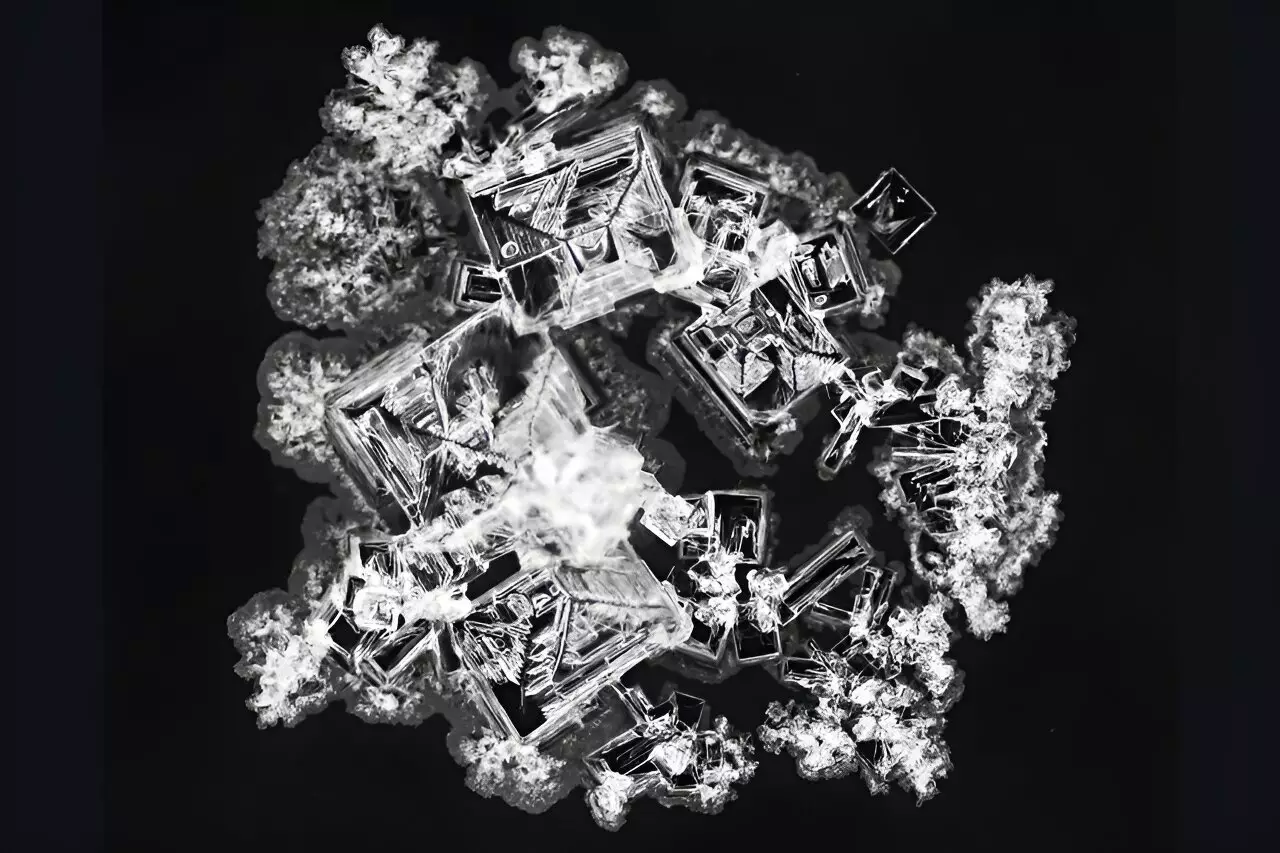In a groundbreaking development at Florida State University, researchers are harnessing the intricate beauty of dried salt patterns to train a machine learning algorithm capable of identifying various salts based on visual observations. This innovative approach, which draws parallels to abstract art, transforms a seemingly mundane phenomenon into an avenue for advanced scientific discovery. Rather than relying solely on traditional chemical analysis methods, this research invites a new era in the intersection of chemistry and technology, capitalizing on computational power to decode complex natural patterns.
While conventional methods of identifying salts often involve cumbersome and time-consuming procedures, the research spearheaded by Cottrell Professor Oliver Steinbock challenges this paradigm by leveraging both the aesthetics and science embedded in a dried drop of salt solution. The striking visual patterns created as water evaporates are not just remnants of a solution but rather chemical fingerprints that can reveal vital information about the salts present.
The Methodology Behind Magic
The investigative journey began with the meticulous collection of 7,500 images representing 42 distinct types of salt stains. Through a sophisticated software strategy, analysts translated these images into quantifiable parameters that could effectively feed into machine learning models. By extracting critical features such as texture, compactness, and deposit area, the researchers sought to unravel the underlying structure and characteristics of each salt—quite literally turning visual data into a numeric language.
This attention to detail not only highlights the researchers’ commitment to precision but also illuminates the unexpected complexity of what appears straightforward at first glance. The resulting machine learning tool showed impressive predictive capabilities, identifying the correct salt composition in 90% of cases from untrained data. This admirable accuracy underscores a significant leap forward; it reveals that even faint visual differences can be discerned with astonishing clarity.
A New Frontier in Chemical Analysis
The advantages of this method are manifold. One standout benefit is its potential to reduce the need for extensive amounts of material for analysis. Utilizing merely milligrams of salt, this system allows scientists and technicians to quickly gauge the nature of a sample with remarkable efficiency. In scenarios where observing material residue could be critical—such as lab safety or contamination assessment—this technology serves as a reliable first step, potentially minimizing risk and enhancing safety protocols.
Moreover, such a technique opens doors beyond terrestrial laboratories. As space exploration ventures into distant planets, equipping rovers with elaborate chemistry labs poses significant logistical challenges. This newly minted machine learning tool offers a lightweight and financially feasible alternative. Imagine a world where explorers equipped with nothing more than a camera can uncover chemical insights hidden in alien soil or atmospheric particles.
Shaping the Future of Research
The ongoing aspirations of the research team are ambitious. Plans to amass hundreds of thousands of additional images promise to refine the capabilities of this algorithm further. This delving into vast datasets not only propels the machine learning model towards increased accuracy but also redefines the landscape of chemical identification. As these tools evolve, we may witness an unprecedented level of automation in chemical analysis, potentially revolutionizing a variety of sectors, from pharmaceuticals to environmental science.
Furthermore, the initiative reflects an essential trend in contemporary science—the desire to automate processes previously considered fundamentally human. The researchers have emphasized this distinction, asserting that while a human would struggle to interpret and discern patterns within a dataset consisting of 7,500 images, machines excel by processing information quantitatively. This departure from traditional methodologies heralds a bold future where human ingenuity can be complemented, and even augmented, by sophisticated algorithms.
Pushing Boundaries and Unlocking Potential
As the world leans further into data-driven decision-making and artificial intelligence, the integration of such technologies in various scientific fields becomes vital. The capacity to instantaneously analyze complex patterns and deliver meaningful insights has implications not just for chemistry but also for a plethora of industries where material composition is crucial. Whether it’s in drug development, forensic science, or environmental monitoring, the ripple effects of this research could potentially reshape operational standards.
In reviewing these findings, it is evident that this work is more than an academic achievement; it embodies a transformative leap in our approach to scientific inquiry. By unveiling the hidden narrative etched into the surfaces of salt stains, these researchers are not merely observing the world anew—they are paving the way for innovations that could fundamentally influence how we interact with the materials that shape our daily lives.


Leave a Reply